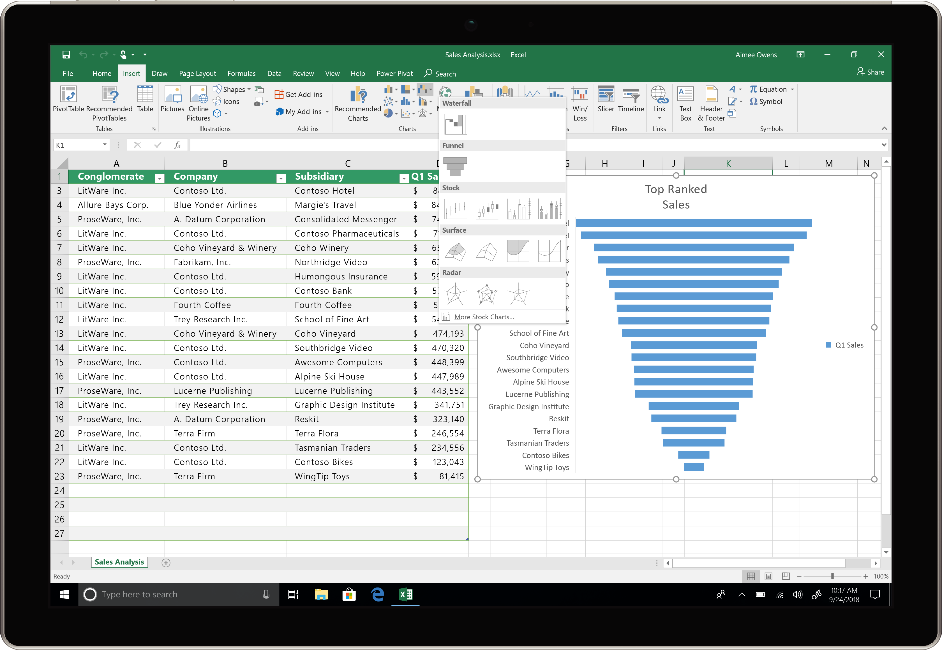Office 2019 - Install to Windows 7. Discussion in 'Application Software' started by spinalGR, Nov 8, 2020. SpinalGR MDL Member. Oct 16, 2014 206 9 10 #1 spinalGR, Nov. Project 2019, Visio 2019, Access 2019, and Publisher 2019 are for Windows only. Office 2019 customers will get access to OneNote. For more details, see here. Compatible with Windows 10 or later. For complete requirements for PC and Mac, see system requirements. This plan works with Office 2019, Office 2016, and Office 2013.
-->
Office 2019 is the latest version of Microsoft's productivity software that's available as a one-time purchase from a retail store or through a volume licensing agreement. Sniper elite v2 demo.

Important
Office 2019 is separate from Office that's available through Office 365 (or Microsoft 365) plans. For example, if you've deployed Microsoft 365 Apps for enterprise (previously named Office 365 ProPlus) to the users in your organization, you don't need Office 2019. You already have all the features, and many more, that are included in Office 2019.
Volume licensed versions of Office 2019 are available for enterprise admins to download and deploy to the users in their organization. This includes the following Office products:
- Office Professional Plus 2019
- Office Standard 2019
- Project Professional 2019
- Project Standard 2019
- Visio Professional 2019
- Visio Standard 2019
These Office products now use Click-to-Run, instead of Windows Installer (MSI), as the installation technology. But, how you activate these Office products – for example, by using Key Management Service (KMS) – remains the same.
Office 2019 for Mac is also available for volume licensed customers. For more information, see Deployment guide for Office for Mac.
What's changed in Office 2019?
The biggest change since Office 2016 is that the installation technology used by the new volume licensed versions of Office is Click-to-Run, instead of Windows Installer (MSI). Click-to-Run has been the installation technology for most Office products since the release of Office 2013.
In addition to Click-to-Run, the following are some other changes that you need to be aware of:
- Office 2019 is supported on Windows 10 but isn't supported on Windows 7 or Windows 8.1. For more information, review the system requirements.
- To configure and perform installations, you use the Office Deployment Tool, which is a free download from the Microsoft Download Center. The Office Customization Tool that you previously used for Windows Installer (MSI) is no longer used.
- Instead of downloading the installation files from the Volume Licensing Service Center (VLSC), you use the Office Deployment Tool to download the installation files directly from the Office Content Delivery Network (CDN) on the internet.
- When you install Office Professional Plus 2019, all apps are installed by default. But, you can configure the Office Deployment Tool to exclude certain apps from being installed.
- Office 2019 is installed on the system drive, which is usually the C: drive. The installation location can't be changed.
- You can configure updates to Office 2019, such as security updates and bug fixes, to be automatically downloaded and installed from the Office CDN. Individual downloads for each security update or bug fix aren't available.
What's stayed the same in Office 2019?
Even though there is a different installation technology, you can still use the same software distribution tools, such as Microsoft Endpoint Configuration Manager, that you currently use to deploy Office. Also, how you activate volume licensed versions of Office – for example, by using Key Management Service (KMS) – remains the same.
The major version of Office 2019 is staying at 16.0, so some additional things are staying the same if you're upgrading from Office 2016, including the following:
- Existing Group Policy settings will continue to work, because the registry location for those settings will still be located in HKEY_LOCAL_MACHINESOFTWAREPoliciesMicrosoftOffice16.0 and HKEY_CURRENT_USERSOFTWAREPoliciesMicrosoftOffice16.0.
- Other registry locations and settings information that reference 16.0 will still apply.
- Add-ins and other extensibility solutions that are compatible with Office 2016 will most likely be compatible with Office 2019 or will require only minimal testing.
What are the new features in Office 2019?
For information about the new features in Office 2019, see the 'what's new' articles for Access, Excel, Outlook, PowerPoint, Project, Visio, and Word. Office 2019 includes some, but not all, features that are available in versions of Office that come with an Office 365 (or Microsoft 365) plan.

Office 2019 won't receive additional new features now that it has been released. If you want to get new Office features on an on-going basis, you should consider moving to an Office 365 plan (or Microsoft 365) plan that includes Office. Most of these enterprise plans include Microsoft 365 Apps for enterprise (previously named Office 365 ProPlus), which includes the same Office apps as Office Professional Plus 2019. For more information about available plans, see Office 365 plans for enterprises and Microsoft 365 plans for enterprises. For more information about new features, see What's new in Microsoft 365.

Can You Install Office 2019 On Windows 7
How do I upgrade to Office 2019?

Office 2019 is the latest version of Microsoft's productivity software that's available as a one-time purchase from a retail store or through a volume licensing agreement. Sniper elite v2 demo.
Important
Office 2019 is separate from Office that's available through Office 365 (or Microsoft 365) plans. For example, if you've deployed Microsoft 365 Apps for enterprise (previously named Office 365 ProPlus) to the users in your organization, you don't need Office 2019. You already have all the features, and many more, that are included in Office 2019.
Volume licensed versions of Office 2019 are available for enterprise admins to download and deploy to the users in their organization. This includes the following Office products:
- Office Professional Plus 2019
- Office Standard 2019
- Project Professional 2019
- Project Standard 2019
- Visio Professional 2019
- Visio Standard 2019
These Office products now use Click-to-Run, instead of Windows Installer (MSI), as the installation technology. But, how you activate these Office products – for example, by using Key Management Service (KMS) – remains the same.
Office 2019 for Mac is also available for volume licensed customers. For more information, see Deployment guide for Office for Mac.
What's changed in Office 2019?
The biggest change since Office 2016 is that the installation technology used by the new volume licensed versions of Office is Click-to-Run, instead of Windows Installer (MSI). Click-to-Run has been the installation technology for most Office products since the release of Office 2013.
In addition to Click-to-Run, the following are some other changes that you need to be aware of:
- Office 2019 is supported on Windows 10 but isn't supported on Windows 7 or Windows 8.1. For more information, review the system requirements.
- To configure and perform installations, you use the Office Deployment Tool, which is a free download from the Microsoft Download Center. The Office Customization Tool that you previously used for Windows Installer (MSI) is no longer used.
- Instead of downloading the installation files from the Volume Licensing Service Center (VLSC), you use the Office Deployment Tool to download the installation files directly from the Office Content Delivery Network (CDN) on the internet.
- When you install Office Professional Plus 2019, all apps are installed by default. But, you can configure the Office Deployment Tool to exclude certain apps from being installed.
- Office 2019 is installed on the system drive, which is usually the C: drive. The installation location can't be changed.
- You can configure updates to Office 2019, such as security updates and bug fixes, to be automatically downloaded and installed from the Office CDN. Individual downloads for each security update or bug fix aren't available.
What's stayed the same in Office 2019?
Even though there is a different installation technology, you can still use the same software distribution tools, such as Microsoft Endpoint Configuration Manager, that you currently use to deploy Office. Also, how you activate volume licensed versions of Office – for example, by using Key Management Service (KMS) – remains the same.
The major version of Office 2019 is staying at 16.0, so some additional things are staying the same if you're upgrading from Office 2016, including the following:
- Existing Group Policy settings will continue to work, because the registry location for those settings will still be located in HKEY_LOCAL_MACHINESOFTWAREPoliciesMicrosoftOffice16.0 and HKEY_CURRENT_USERSOFTWAREPoliciesMicrosoftOffice16.0.
- Other registry locations and settings information that reference 16.0 will still apply.
- Add-ins and other extensibility solutions that are compatible with Office 2016 will most likely be compatible with Office 2019 or will require only minimal testing.
What are the new features in Office 2019?
For information about the new features in Office 2019, see the 'what's new' articles for Access, Excel, Outlook, PowerPoint, Project, Visio, and Word. Office 2019 includes some, but not all, features that are available in versions of Office that come with an Office 365 (or Microsoft 365) plan.
Office 2019 won't receive additional new features now that it has been released. If you want to get new Office features on an on-going basis, you should consider moving to an Office 365 plan (or Microsoft 365) plan that includes Office. Most of these enterprise plans include Microsoft 365 Apps for enterprise (previously named Office 365 ProPlus), which includes the same Office apps as Office Professional Plus 2019. For more information about available plans, see Office 365 plans for enterprises and Microsoft 365 plans for enterprises. For more information about new features, see What's new in Microsoft 365.
Can You Install Office 2019 On Windows 7
How do I upgrade to Office 2019?
We recommend that you uninstall existing versions of Office before you deploy Office 2019. If you're uninstalling previous versions of Office products that were installed with Windows Installer (MSI), the Office Deployment Tool can remove most of those products for you as part of the installation of Office 2019. For more information, see Remove existing versions of Office before installing Office 2019.
Additional information
Office 2019 On Windows 7 Workaround
- Office Professional Plus 2019 includes Access, Excel, OneNote, Outlook, PowerPoint, Publisher, Word, and Skype for Business.
- There isn't a new 2019 version of OneNote, but a version of OneNote is installed with Office 2019. For more information, see Deployment guide for OneNote.
- All products in the Office 2019 are available in both 32-bit and 64-bit versions. We recommend 64-bit on computers that have 4 gb or more of memory. But you should assess application compatibility and other factors that might require you to use the 32-bit version. For more information, see Choose between the 64-bit or 32-bit version of Office.
- After downloading the installation files, internet access isn't required to install, activate, or use Office 2019.
- There isn't a 2019 version of SharePoint Designer or InfoPath. The last version for both products is 2013.
- Volume licensed versions of Office 2019 aren't supported on Windows 10 in S mode or when using Windows Defender Application Control (WDAC).

